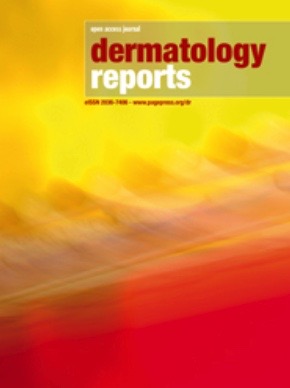Report on a Noninferiority Trial Comparing Behavioral and Drug Therapies for Overactive Bladder in Parkinson Disease
Introduction: Advancing Health and Well-being (SDG 3)
A recent 12-week randomized noninferiority trial has provided critical evidence supporting behavioral therapy as a primary treatment for overactive bladder (OAB) symptoms in patients with Parkinson disease (PD). The study’s findings align with the core objectives of Sustainable Development Goal 3 (Good Health and Well-being) by demonstrating a safe, effective, and accessible intervention that improves the quality of life for individuals living with a non-communicable disease. By establishing a non-pharmacological option with fewer adverse effects, this research contributes to ensuring healthy lives and promoting well-being for a vulnerable population.
Study Methodology and Design
The trial (NCT03149809) was conducted between 2018 and 2023 across four US Veterans Affairs health care systems, underscoring the role of strong public health institutions (SDG 16) in advancing medical research. Key design elements included:
- Participants: 77 individuals with PD (mean age 71.3 years) were randomized. The cohort was predominantly male (n=65), highlighting a need for future research to ensure findings are equitable across genders (SDG 5).
- Interventions:
- Behavioral Therapy Group (n=36): Received training from a nurse practitioner on pelvic floor muscle exercises and urge suppression strategies.
- Drug Therapy Group (n=41): Received solifenacin, starting at 5-mg daily with a possible titration to 10-mg.
- Primary Outcome: The primary measure was the score on the International Consultation on Incontinence Questionnaire OAB module (ICIQ-OAB) at 12 weeks, with a noninferiority margin of 15%.
Key Findings: Efficacy, Safety, and Quality of Life
The results demonstrated that behavioral therapy was noninferior to solifenacin, with significant implications for patient safety and well-being.
- Symptom Improvement: Both treatment groups showed significant improvement in ICIQ-OAB scores, falling within the pre-defined noninferiority margin (mean score: behavioral therapy 5.5 vs. solifenacin 5.8). This indicates comparable efficacy in reducing OAB symptoms.
- Quality of Life (QOL): Both groups reported substantial improvements in QOL related to OAB and reduced symptom bother. This directly supports the achievement of well-being targets within SDG 3.
- Safety and Adverse Events: The safety profile strongly favored behavioral therapy.
- Participants receiving solifenacin were more likely to report adverse events such as dry mouth and dry skin.
- Crucially, six falls were reported in the drug therapy group, with one resulting in a hip fracture. Zero falls were reported in the behavioral therapy group. This finding is critical for a population already at high risk for falls.
- Feasibility and Adherence: Behavioral therapy proved feasible and was associated with high adherence, even among patients with mild cognitive impairment. This demonstrates its potential to reduce inequalities in care (SDG 10) by offering a practical alternative to medication, which can carry a higher burden of side effects and cost.
Implications for Sustainable Development Goals (SDGs)
The trial’s outcomes have direct and significant relevance to several SDGs:
- SDG 3 (Good Health and Well-being): The study identifies a safer, effective treatment that improves QOL for people with a chronic neurological condition. By reducing the risk of medication-related harm, particularly falls, it directly promotes safer healthcare and well-being.
- SDG 10 (Reduced Inequalities): By validating a low-cost, accessible, non-pharmacological intervention, the research offers a pathway to more equitable healthcare. Behavioral therapy can empower patients and reduce the financial and physical burden of long-term medication, mitigating inequalities faced by persons with disabilities.
- SDG 5 (Gender Equality): The study’s limitation of a predominantly male sample group underscores the importance of inclusive research. Future studies must ensure gender-balanced cohorts to confirm these benefits are applicable to all, aligning with the principle of leaving no one behind.
Conclusion and Future Directions
This randomized noninferiority trial concludes that pelvic floor muscle exercise-based behavioral therapy is a safe and effective initial treatment for OAB in persons with PD, with efficacy comparable to solifenacin but with a superior safety profile. The findings strongly suggest that behavioral therapy should be considered a first-line approach, even for patients with mild cognitive dysfunction, to improve health outcomes and reduce the risk of adverse events like falls.
Future research should focus on longer follow-up periods, identifying predictors of treatment response, and investigating the potential benefits of combined therapies for non-responders. Critically, subsequent trials must include more diverse populations to ensure the findings are broadly and equitably applicable.
Analysis of Sustainable Development Goals in the Article
1. Which SDGs are addressed or connected to the issues highlighted in the article?
- SDG 3: Good Health and Well-being: This is the primary SDG addressed. The article focuses on a clinical trial comparing two treatments (behavioral therapy and medication) to improve the health and quality of life for individuals suffering from overactive bladder (OAB) symptoms associated with Parkinson disease (PD), a non-communicable disease. The study’s goal is to find effective and safe treatments to manage symptoms, reduce bother, and improve overall well-being.
- SDG 10: Reduced Inequalities: The article implicitly connects to this goal by focusing on a specific vulnerable population: elderly individuals with Parkinson disease, including those with cognitive impairment. By investigating safer and more feasible treatment options like behavioral therapy, the research aims to reduce health outcome inequalities for this group, who are at a higher risk of adverse effects from medication (such as falls).
2. What specific targets under those SDGs can be identified based on the article’s content?
-
Target 3.4: By 2030, reduce by one-third premature mortality from non-communicable diseases through prevention and treatment and promote mental health and well-being.
- The article directly addresses the “treatment” and “well-being” aspects of this target. The research evaluates therapies for symptoms of Parkinson disease, a non-communicable disease, with the explicit aim of achieving “fewer OAB symptoms, reduced bother, and improved QOL [Quality of Life].”
-
Target 3.8: Achieve universal health coverage, including financial risk protection, access to quality essential health-care services and access to safe, effective, quality and affordable essential medicines for all.
- The study contributes to this target by evaluating the “safety” and “effectiveness” of different healthcare services. It compares a drug therapy (solifenacin) with a non-drug behavioral therapy, highlighting that the drug therapy group experienced more adverse events, including falls. The finding that behavioral therapy is “noninferior” and safer suggests a path toward providing higher-quality and safer care options.
-
Target 10.3: Ensure equal opportunity and reduce inequalities of outcome…
- The research helps reduce inequalities of health outcomes for people with Parkinson disease. The article notes the “increased risk of falls among persons with PD” and that the drug therapy group experienced falls while the behavioral therapy group did not. By validating a safer alternative, the study promotes more equitable health outcomes for this vulnerable group, who might otherwise suffer disproportionately from medication side effects.
3. Are there any indicators mentioned or implied in the article that can be used to measure progress towards the identified targets?
Yes, the article mentions several specific quantitative and qualitative indicators used in the clinical trial that align with measuring progress towards the SDG targets.
-
Indicator for Target 3.4 (Promote Well-being):
- Quality of Life (QOL) Scores: The article explicitly states, “researchers observed improvement in quality of life (QOL) related to OAB reported in both groups.” This is a direct measure of well-being.
- Symptom Severity and Bother Scores: The primary outcome was the “International Consultation on Incontinence Questionnaire OAB module (ICIQ-OAB)” score. The article reports that these scores “were significantly improved across both groups,” indicating a reduction in disease burden.
-
Indicator for Target 3.8 (Access to Safe and Effective Care):
- Rate of Adverse Events: The article provides clear data on this indicator. It notes that “participants who received solifenacin were more likely to report experiencing adverse events like dry mouth,” and more critically, “6 falls in the drug therapy group and no falls in the behavioral therapy group.” This directly measures the safety of the treatment.
- Treatment Adherence and Dropout Rates: The study measures the feasibility and acceptance of the therapies. It notes that behavioral therapy “is associated with a high level of adherence compared with drug therapy” and that several patients in the drug group requested to stop use “because of treatment-emergent AEs [adverse events].”
-
Indicator for Target 10.3 (Reduce Inequalities of Outcome):
- Availability of Safe Treatment Options for Vulnerable Groups: The study’s conclusion serves as an indicator of progress. The finding that “behavioral therapy may be a suitable initial treatment approach, even among persons with PD and mild cognitive dysfunction” demonstrates the development of tailored interventions that reduce risks (like falls) for a specific group with disabilities, thereby promoting more equal health outcomes. The use of the “Montreal Cognitive Assessment (MOCA) score” to specifically include patients with cognitive impairment reinforces this.
4. Summary of Findings
| SDGs | Targets | Indicators Identified in the Article |
|---|---|---|
| SDG 3: Good Health and Well-being |
Target 3.4: Reduce mortality from non-communicable diseases and promote mental health and well-being.
Target 3.8: Achieve access to safe, effective, quality, and affordable essential health-care services. |
|
| SDG 10: Reduced Inequalities | Target 10.3: Ensure equal opportunity and reduce inequalities of outcome. |
|
Source: neurologylive.com







